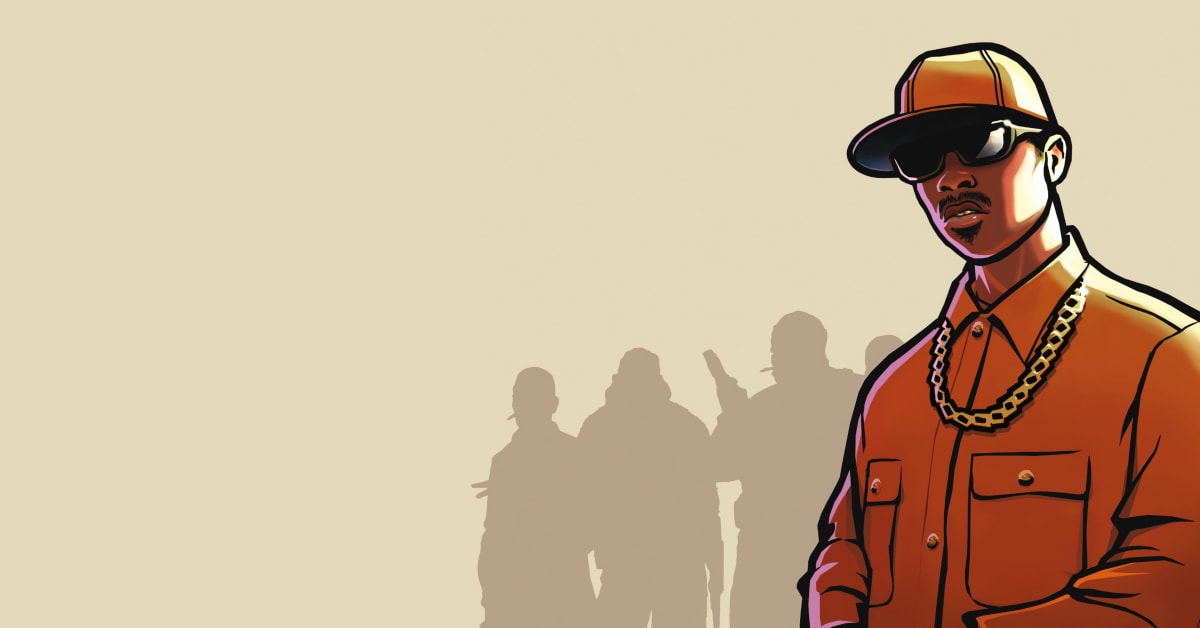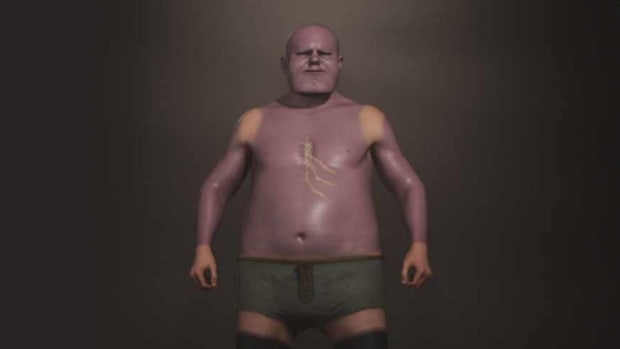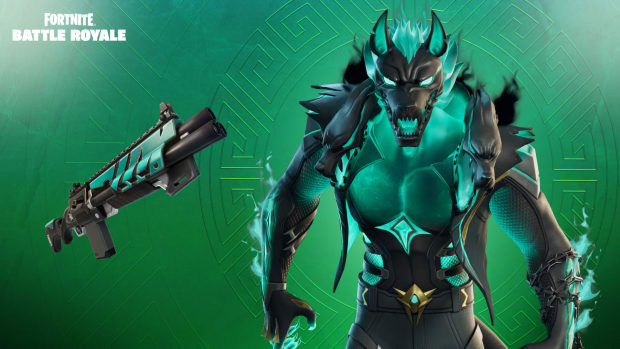
The best hip hop video games
Hip hop and video games have a similar timeline, but for their first couple of decades that’s about all they had in common. Both were sniffly dismissed as fads, novelty youth cultures that could be superficially co-opted by big business in a rush to sell everything from cartoons to breakfast cereal. But both grew regardless, to prove themselves with significant identities and cultures, truckin’ on through boom and bust years. They eventually became dominant forces of pop culture, and on occasion have bonded beyond just wearing each other’s clothes.
Because to really represent a culture in a different art form you’ve got to go deep. Licensing a few anthems for your soundtrack, sticking a character in a backwards baseball cap, or have them ask who’s the best rapper in the Wu-Tang Clan doesn’t really cut it. In this, the year of the 50th anniversary of hip hop, these games are the ones that successfully showed their love of the four elements of hip hop; rapping, b-boying, DJing, and graffiti. Because the developers behind these games understood KRS One when he said “rap is something you do, hip hop is something you live.”
Grand Theft Auto: San Andreas
There are plenty of games that have done a great job licensing banging hip hop. Not just relying on a stack of cash to buy the classics or the face-tatted stars of the day, but digging out underground head-nodders, promoting up-and-coming talent, and, yes, slapping us with an anthem to set the roof on fire.
There was a period in the early 2000s where Electronic Arts’ and Activision’s licensing divisions could give Rockstar Games a run for its money, with soundtracks to Need for Speed and Tony Hawk’s Pro Skater paying big bucks for talent from indie labels like Rawkus Records. In the limbo period when vinyl was fading and streaming had yet to become the monster it is today, they helped hip hop artists reach brand new audiences that traditional distribution and radio play hadn’t yet figured out.
But it’s Rockstar’s attention to detail and clear love of the culture that makes GTA’s ‘90s-set San Andreas really stand out. The story of CJ’s life from petty thief to criminal mastermind pulls in a lot of real-life events of the period, from rampant police corruption to gang violence and the crack epidemic. This, coupled with personal loss, reflects the struggle of young Black men striving to bust out of the cycle of poverty and segregation - a tale long-told in rap since Grandmaster Flash and The Message.
All of this is smothered in a soundtrack that not only represents the music of the time, but features throwbacks to eras that inspired the classic sounds of 1990s hip hop. It starts with Julio G hosting Radio Los Santos, dropping stone-cold classics like Compton’s Most Wanted’s Hood Took Me Under and La Raza from Kid Frost, proving whoever held the licensing budget understood the brief as much as the music. Then, to pay respect to the community, it hired Public Enemy’s Chuck D to host joints from 1980s pioneers including Slick Rick, Kool G Rap, Brand Nubian, and Ultramagnetic MCs.
Not content to just represent two of the most important eras in rap, Rockstar also created radio channel Bounce FM to bring the music full circle. Hosted by funk grandaddy George Clinton, and spinning a selection of funk, disco and soul, it features tracks heavily sampled in ‘80s and ‘90s hip hop. So you’ll find foundational tracks from The Isley Brothers (Between The Sheets, famously sampled in Biggie's Juicy) and Ohio Players’ Funky Worm, a track so heavily sampled by the likes of NWA, De La Soul, and Snoop Dogg, it’s a wonder it hasn’t actually disintegrated. San Andreas has the all-encompassing hip hop soundtrack.
Floor Kids
Breakdancing - b-boying to the practitioners - is perhaps the most forgotten element of hip hop. It struggles to remain in the public eye, and where it has, it has been almost fully assimilated into contemporary street dance; the majority of TV talent show dance acts could probably trace their moves back to the original Rock Steady Crew.
Dancing games are most associated with giant arcade units where fleet-footed kids stomp themselves into early hip replacement. Where breaking has appeared in games, it has primarily used for novelty, capoeira-based violence - Tekken’s Eddy Gordo’s backspin kicks or Streets of Rage’s Eddie Hunter, a kid cursed to wear not only fingerless gloves but rollerblades as well.
But Hololab’s Floor Kids is a celebration of b-boying, an infectious flow state of movement and stylish poses, soundtracked with all-original breaks. Developed slowly over ten years by DJ, turntablist, and part-time Deltron 3030 member Kid Koala, alongside animation and b-boy partner Jonathan Ng, it captures the perfect timing and musical understanding you’ll find on a dance floor between dancer and DJ.
Ng’s unique hand-drawn animations pluck out the step-by-step movements that only a dancer could understand having put his body through the process. They capture the physics and momentum as the weight of a body shifts from casual top rock, dropping to a six-step down rock, to invert freeze. Threading seamlessly between these moves is a soundtrack loose enough to create a feeling of looping the breaks and scratching in real-time.
Don’t let its cute style fool you. Floor Kids is to b-boying what Olli Olli World is to skateboarding. It understands that dancing is a visual language first, captures the power and skill of the individual moves, and soundtracks it with an infectious groove from press start to power down.
DJ Hero
Back in the early 2000s, licensing music was an instant pass for credibility. Throw money at labels, bands and producers for their well-known songs and there’s a good chance you can earworm an established audience into your game. Some took that approach further, with the folk at Electronic Arts trying something that at the time broke new ground. The team behind arcade snowboard celebration SSX hired DMC World DJ Champ and some-time Beastie Boys turntablist Mix Master Mike on remix duties, alongside beatboxer Rahzel to make the music with his mouth.
Coupled with a dynamic soundtrack from experimental producer Kenneth Newby - the bass only kicks in if you’re in first place, low pass filters thin the music out as you drop off a cliff - SSX was so successful it set EA up for a run of quality licensing across its short-lived EA Sports Big label. A good DJ changes their set to react to the crowd. SSX was a good video game changing the sound to react to your play.
That approach of inviting the DJ in to create the soundtrack, not just curating it, was picked up later by FreeStyleGames. Back in 2009 DJ Hero could have been easily dismissed as a novelty spin-off of what was already a ridiculously lucrative genre. Guitar Hero had blazed a path three years earlier, eventually assimilating seemingly every genre of guitar music, with players blasting it out of their TV speakers using plastic guitars, drums and even, at one point, the dreaded keytar.
So a big chunky turntable that kind of looked like the offspring of Fisher Price and Vestax could have easily been laughed out of the park - if it hadn’t been produced with such attention to detail as by Activision’s UK music nerds at FSG.
DJ Hero is a masterclass in credibility. It takes a culture and transfers it to another format, bringing along some of the pioneers of that artform, as well as introducing it to a whole new audience, without ever cheapening its source material. Tutorials by breakbeat originator Grandmaster Flash are the first co-sign. Then music created by DJ Shadow, Jazzy Jeff, DJ Yoda, and Z-Trip, who remixed, blended, sampled and scratched tracks for the original soundtrack honour the techniques and craft of turntablism.
While it was released during a time when anyone was able to blend two songs together and stick “mashup producer” in their Twitter bio, DJ Hero did what hip hop had been doing with music since day one; creating brand new bangers from the old and the new. Billy Squier’s Big Beat hangs out with N.E.R.D. 's Lapdance, Rihanna bum-bum-be-dum-bums all over the Trammps Disco Inferno, and Bell Biv DeVoe get Intergalactic with The Beastie Boys. It isn’t just the soundtrack that makes DJ Hero. While no one would suggest it makes you a DJ, it does a good job of simulating the actions, the cuts and scratches, the beatmatching of DJing live, and does what all good video games can do; creates a world of illusion that you get to live in the moment. It simulates the thrill of DJing live, the touching and manipulation of music. You are in another universe, where the dominating force is sound.
Marc Ecko’s Getting Up: Contents Under Pressure

All of that 2D art you see in games? You owe it to the street art in Marc Ecko's Getting Up.
Mark Ecko
Since the early 1970s, every single visual medium has stolen from graffiti culture. Creative directors have made entire careers from pilfering what grew on subway trains and tenement buildings. Graffiti has been abused by a commercial world in need of the short hand for “cool”. A cheap can of spray paint is endlessly effective.
Video games are covered in paint. Any and all open world games are decorated with graffiti pieces, from tags and throw-ups, to paste-ups, stencils, stickers and full-blown murals. The best at this - Ubisoft’s Watch Dogs, Activision’s Tony Hawk’s Pro Skater, Rockstar’s Grand Theft Auto - do this well by incorporating them into the environment and thinking like an artist. How does this piece look at eye level? How do I get my art at the top of that building and project it across the skyline? Which boroughs does it travel to on the train? The worst use graffiti as clumsy sign-posting or environmental storytelling, or use clip art like cliches as skin on an already drab setting.
Marc Ecko’s Getting Up: Contents Under Pressure took graffiti from the background and put it front and centre. Atari hired entrepreneur, Complex Magazine founder, and graff artist Marc Ecko, who already carried weight with the likes of Chunk D and Spike Lee with his early t-shirt designs, to co-create a game that honoured the artform as well as turn it into the central gameplay element.
It’s flawed, but it tries its best to emulate the experience of getting art up on the streets without getting busted by the cops. You begin painting with a ghost outline, and use thumbsticks to spray the image on the walls, where lingering too long will cause drips and lessens the impact of the piece. Smaller tasks involve slapping stickers, stencils and posters up for a quicker hit, and there’s rival rews to worry about, too.
While the gameplay can be wonky, it’s Contents Under Pressure’s understanding of the artform and the pioneers behind it that make it an interactive document of hip hop. Bronx bomber Cope2 teaches you how to tag trains, OBEY shows you the joy of wheat pasting, FUTURA schools you on the importance of keeping a black book, and T-Kid 170 goes big with mural training. Add another 60 plus artists, an original soundtrack from RJD2, and a cast including Talib Kweli, RZA, Diddy, and, erm 1960’s Batman Adam West, and you have a near-perfect visual ode to the streets.






